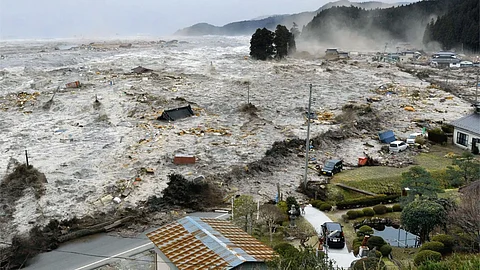

Russia and Japan were recently hit by massive tsunamis, caused by a massive underwater earthquake. A 6.5 earthquake shook Bay of Bengal in another incident, which raised alarm, though authorities promptly assured that there is no threat of tsunami.
These events collectively highlight the urgent necessity for faster and accurate tsunami detection mechanisms, which are now being efficiently managed by AI.
Detection and forecasting of Tsunamis using AI integrals and hydrophones, Machine learning model, and oceanographic data integration. Various institutions and teams either develop their own systems, or integrate AI into the current early warning systems.
With the growing uncertainty of tsunami, AI warning systems read underwater earthquake data and make instant decisions if a tsunami is expected to occur, allowing predictions to be made in seconds. This speed in forecasting benefits the emergency services, giving them the power to warn and organize population evacuations well in advance which in the right conditions, can save thousands of lives.
This system, without a title, is referred to as an AI-based Tsunami Early Warning System or an AI-driven tsunami detection model.
Here's how AI is transforming tsunami warnings
-Hydrophones grant AI the ability to “listen” to unique noise patterns from submerged quakes. Since a tsunami’s underwater “listening” AI is able to estimate the likelihood, size, and path of a tsunami far in advance, and often provides warnings upwards of thirty minutes earlier.
- AI systems learn a myriad of data from past tsunamis to ocean floors, and even the present ocean conditions To forecast hit coastal regions. For example, recent Japanese and Russian shores, Japan's coast was forecast to be hit by a tsunami. This enhances predictive accuracy, reduces panic and false warnings, and thereby improves trust in the infrastructure.
- AI models get more effective and accurate as they are trained with new information from previous tsunami occurrences and get honed by scientists over time. This enables them to make timelier and more credible predictions.
Through an understanding of the innovative potential facilitated through AI, communities become better informed and capable of preparing and responding in real time.
The goal is clear as governments attempt to merge AI with current surveillance systems: integrating systems to ensure critical early warnings set to be sent always reach in time before catastrophe occurs.
Aside from AI systems, there are traditionally work other systems
But there are some popular projects and systems in this area:
NEPTUNE (North-East Pacific Time-series Underwater Networked Experiments) – employs underwater sensors coupled with AI to track ocean conditions.
SIFT (Short-term Inundation Forecasting for Tsunamis) – AI-powered computational system for live tsunami simulation designed by USGS.
Various AI models for tsunamis and risk maps designed by NOAA, JMA (Japan Meteorological Agency), and other international research partner organizations.
In summary, although the Bay of Bengal earthquake did not result in a tsunami, the devastating effects of tsunamis that laid waste to Russia and Japan remind us of the relentless and capricious nature forces. AI is a vital antidote, decoding the ocean's messages into invaluable seconds that can be salvaged on shore.